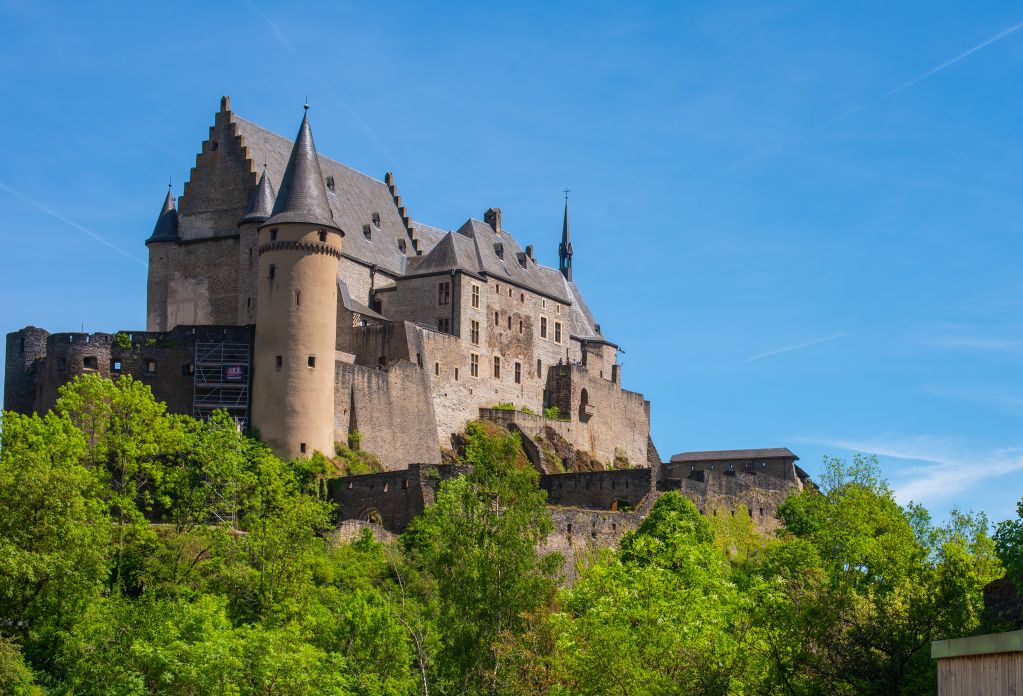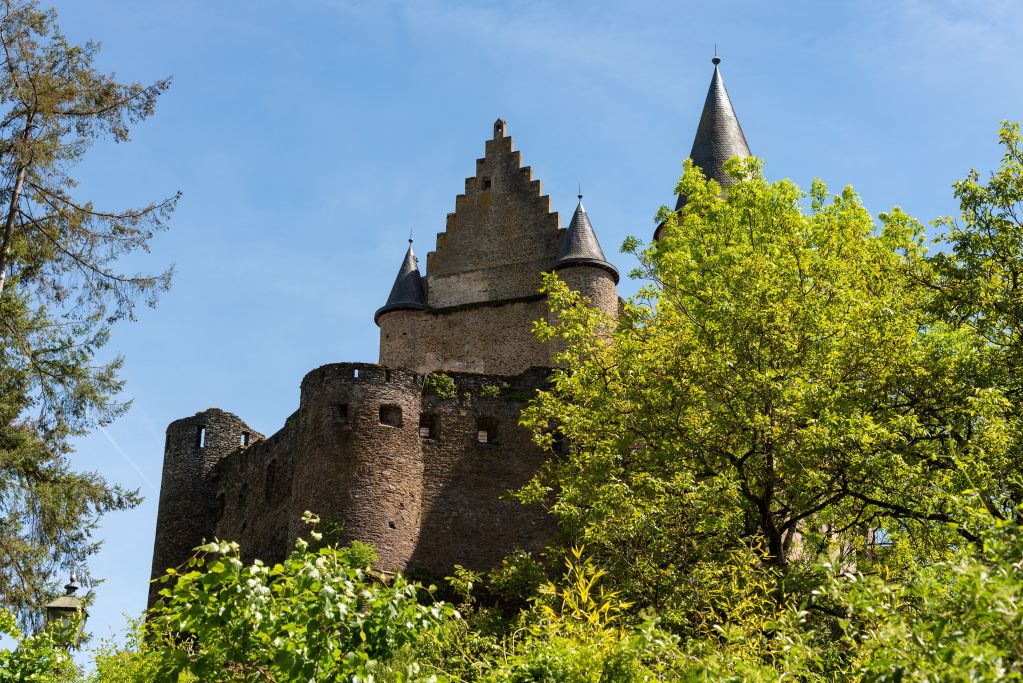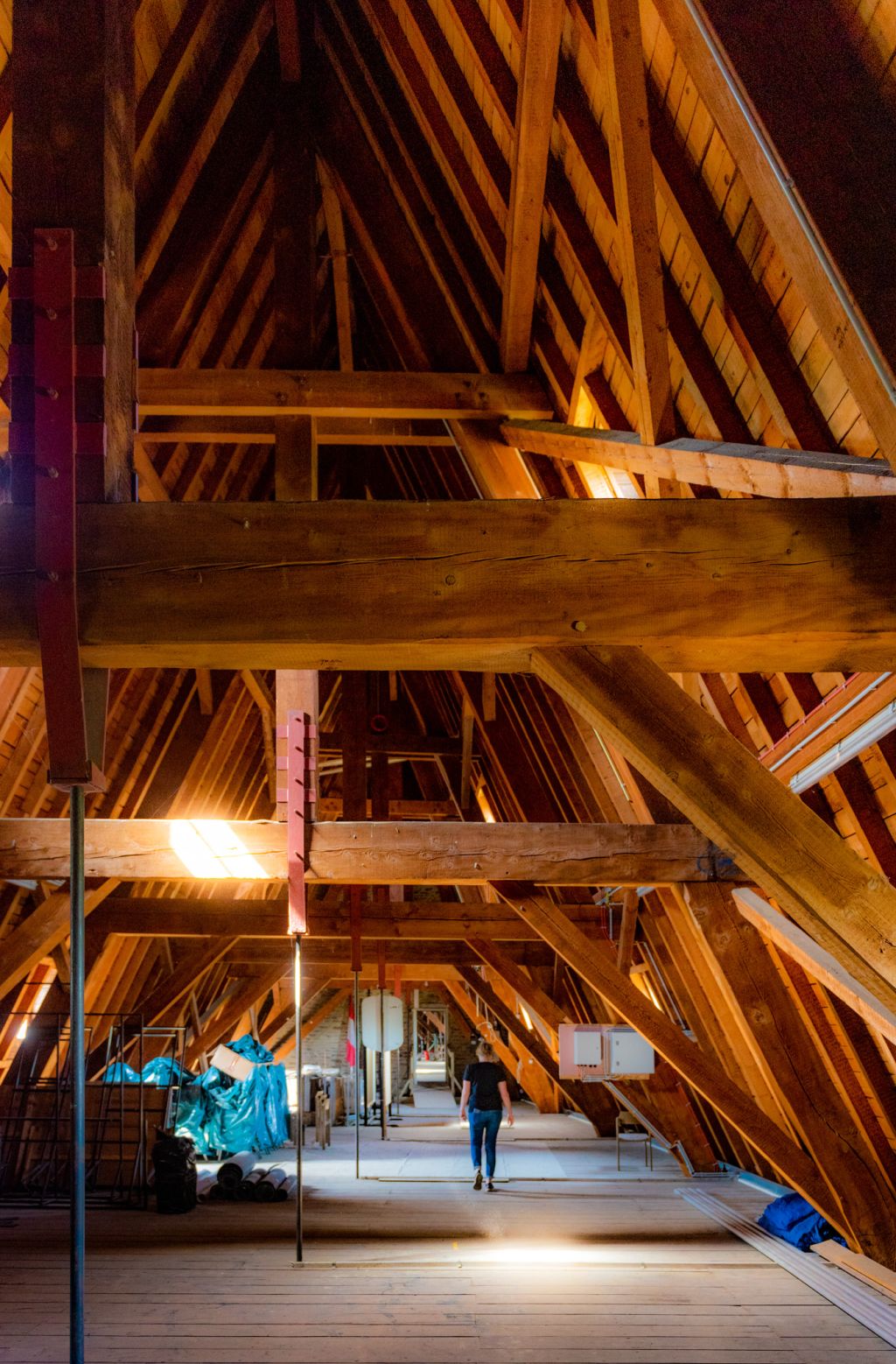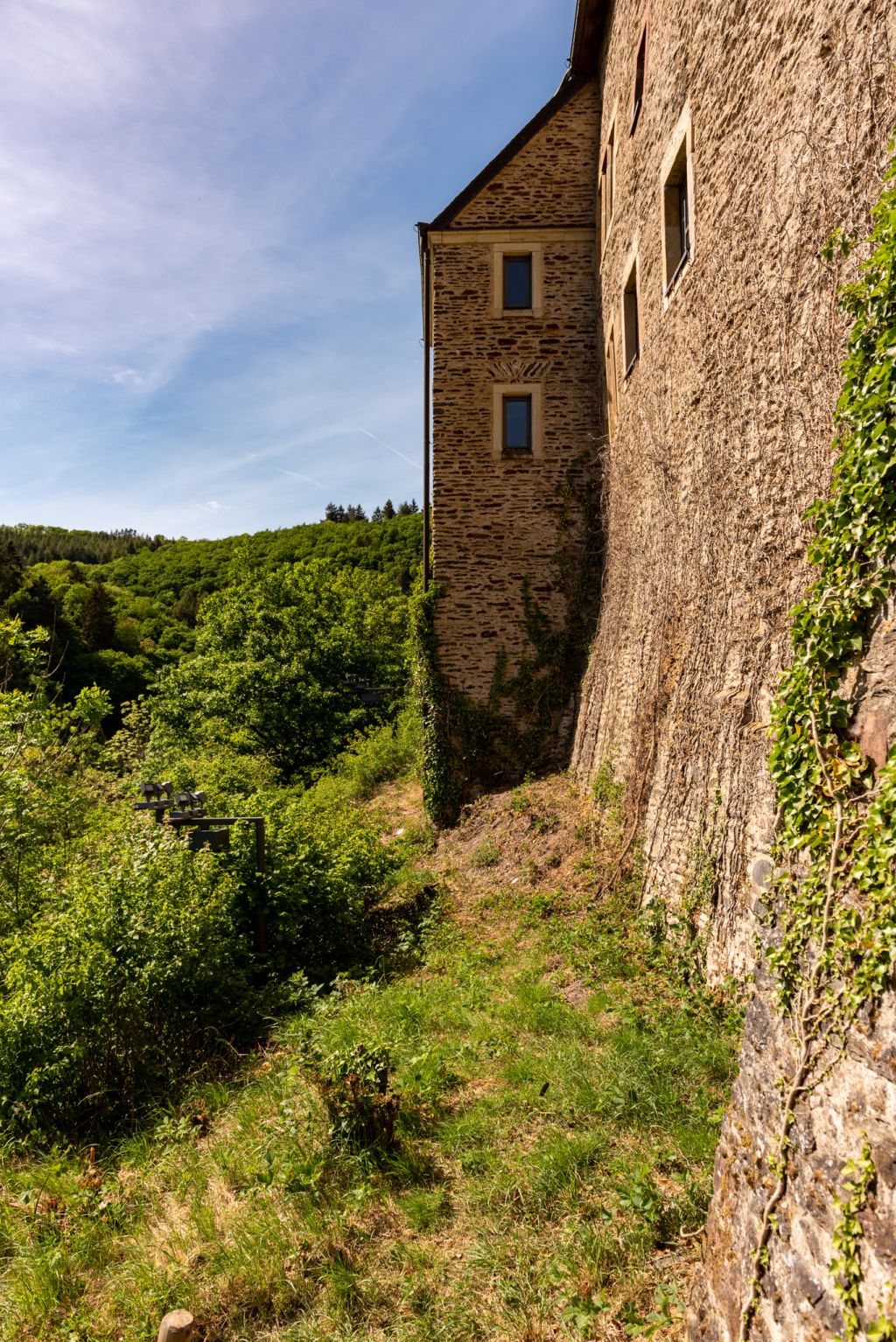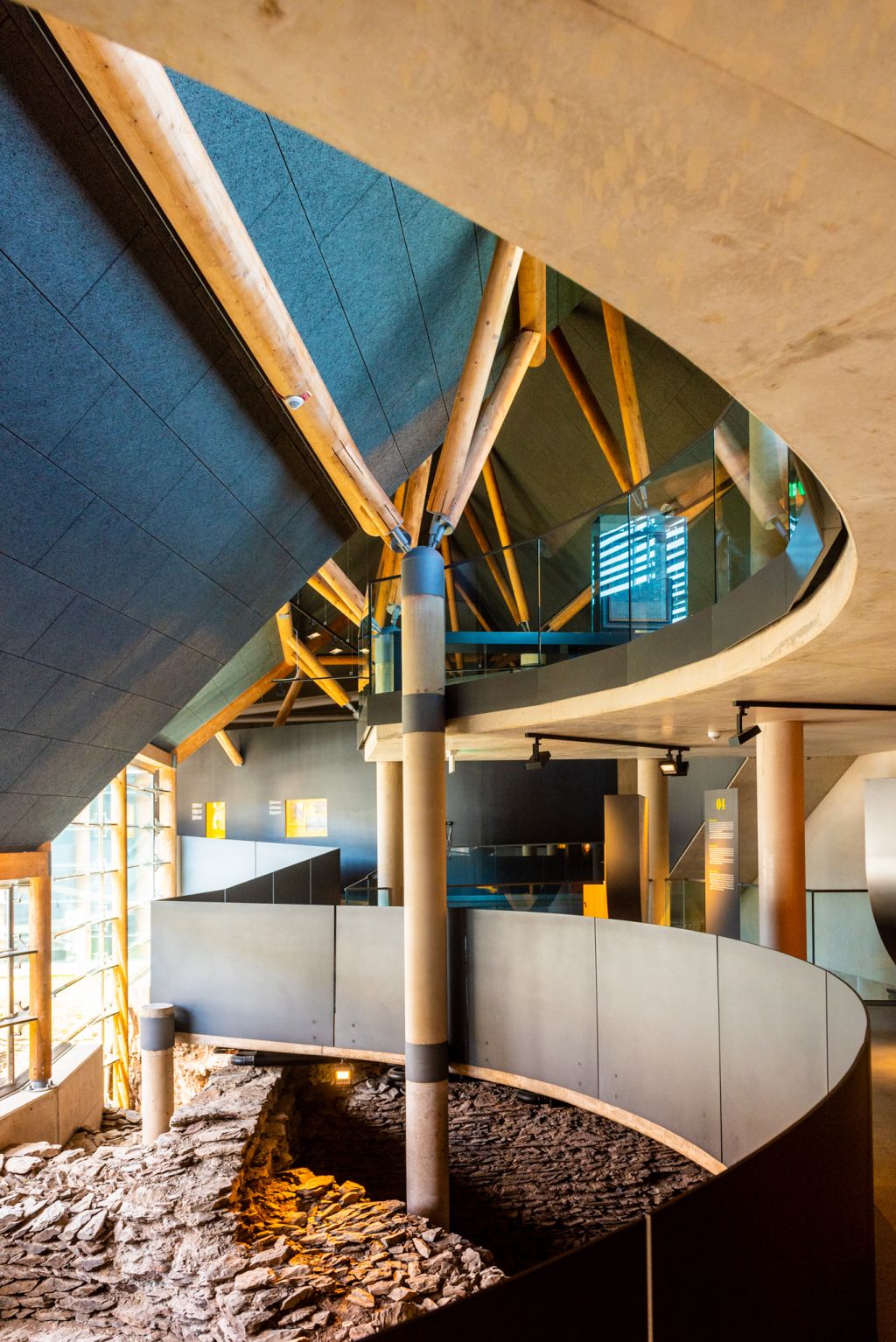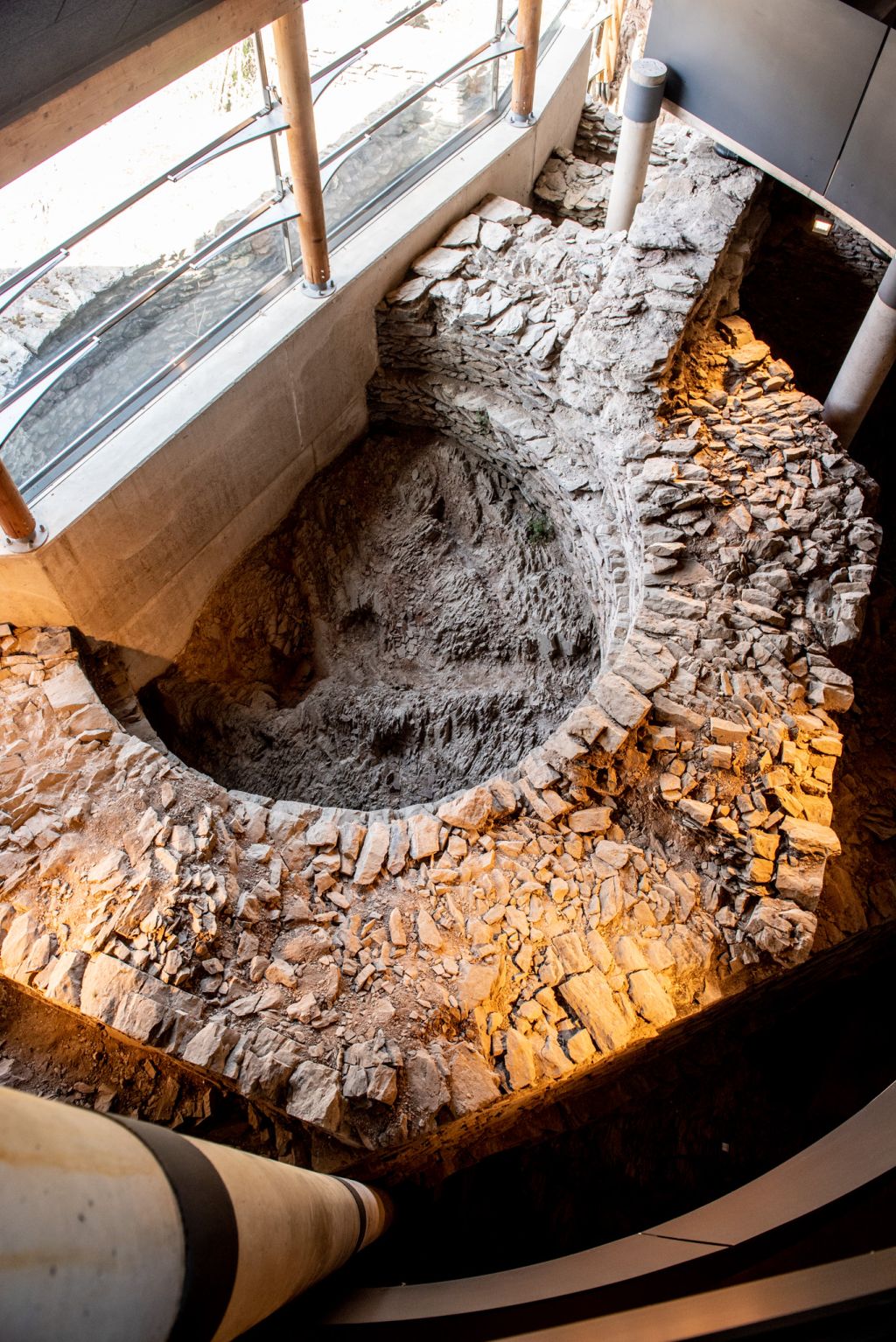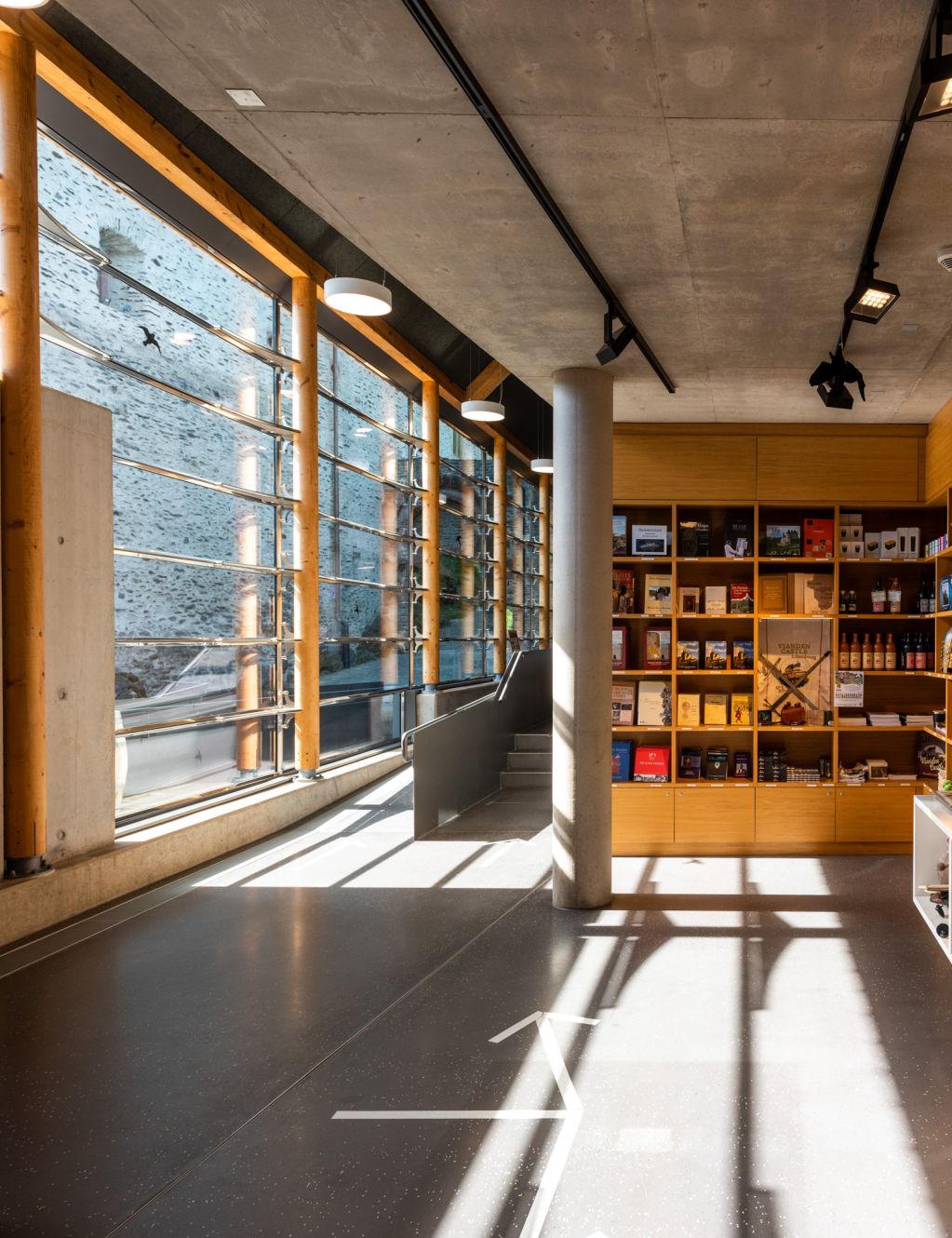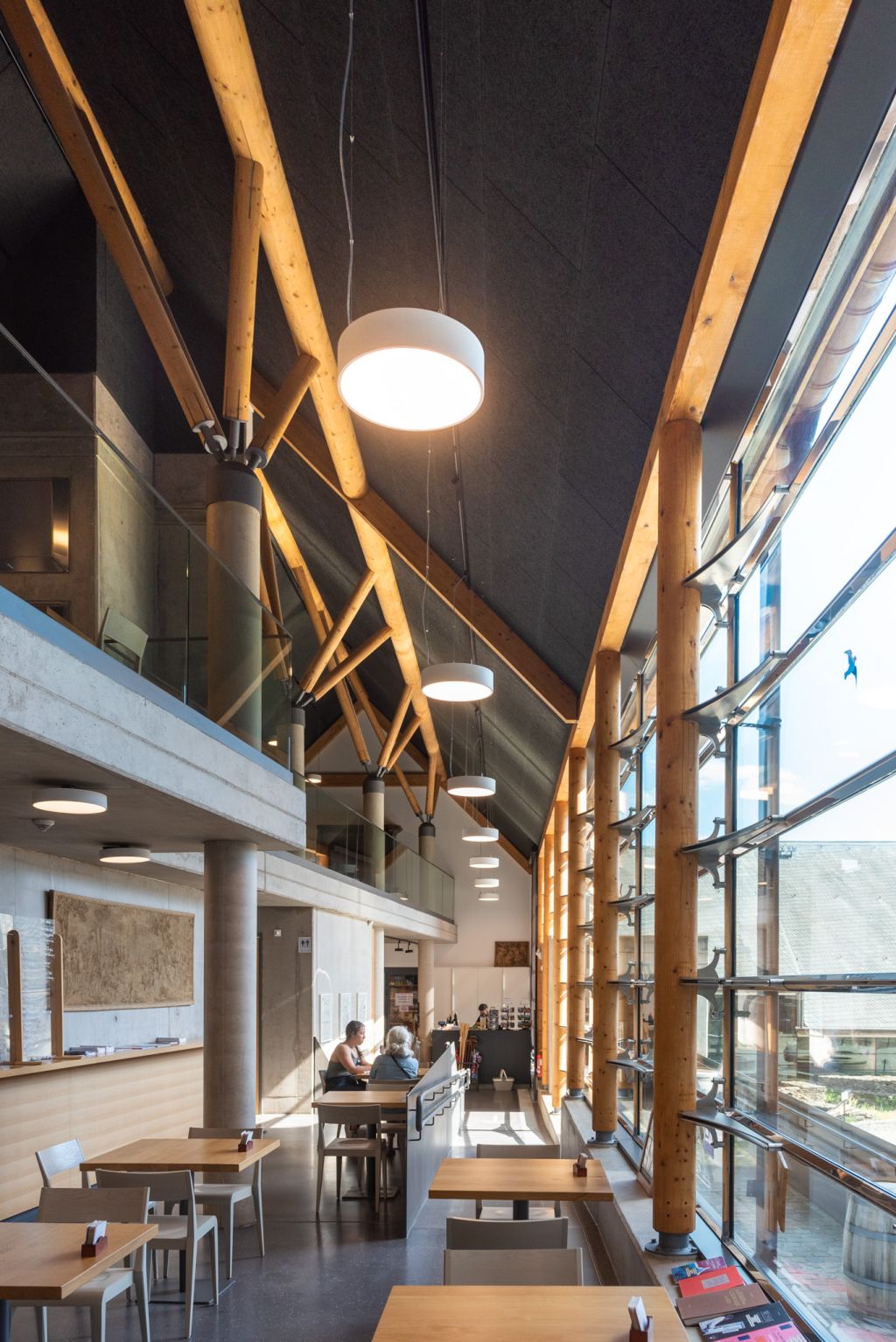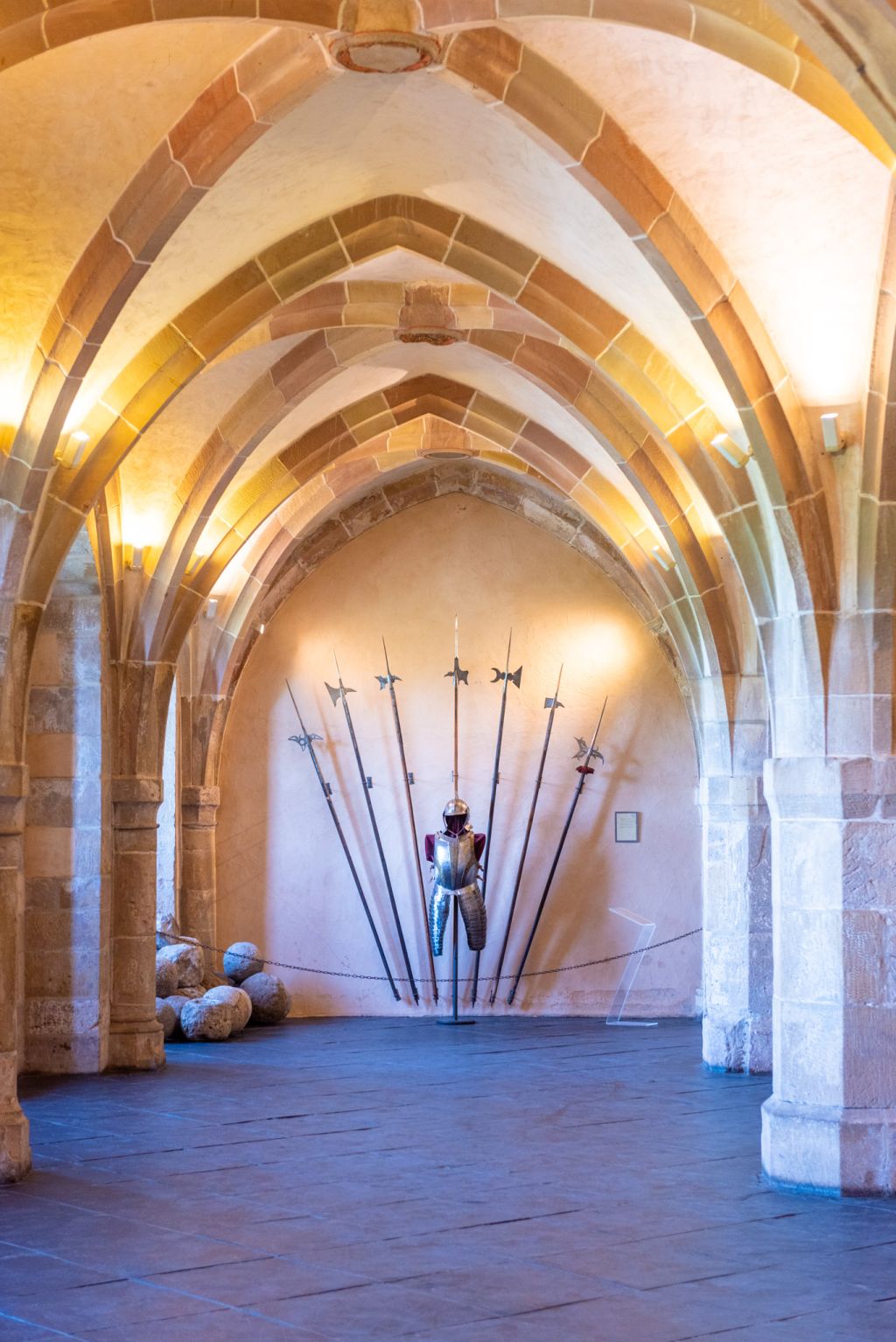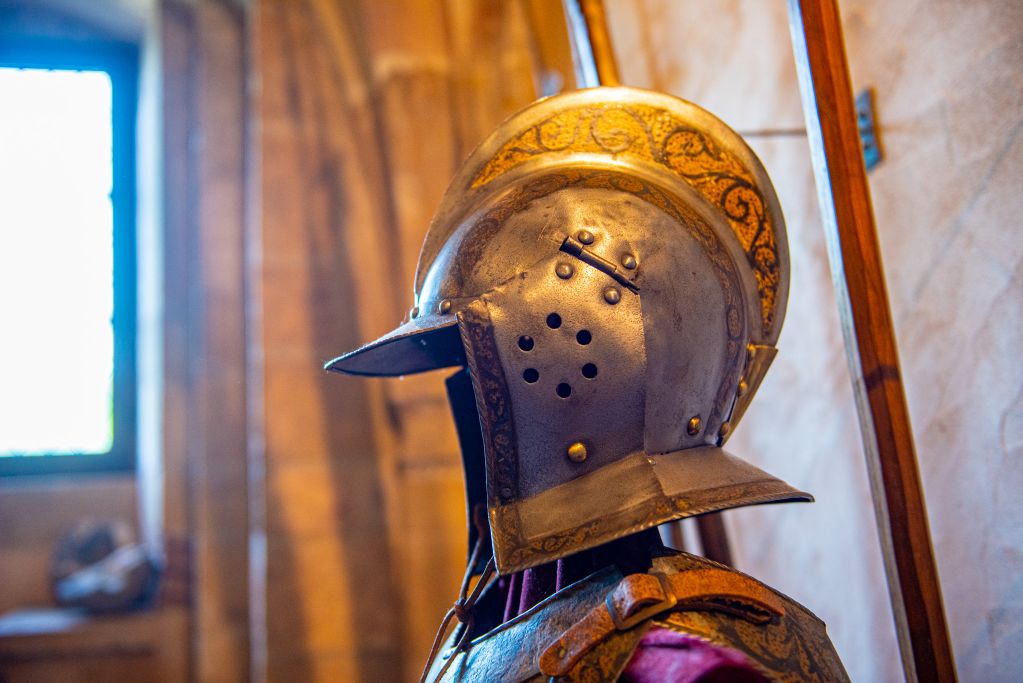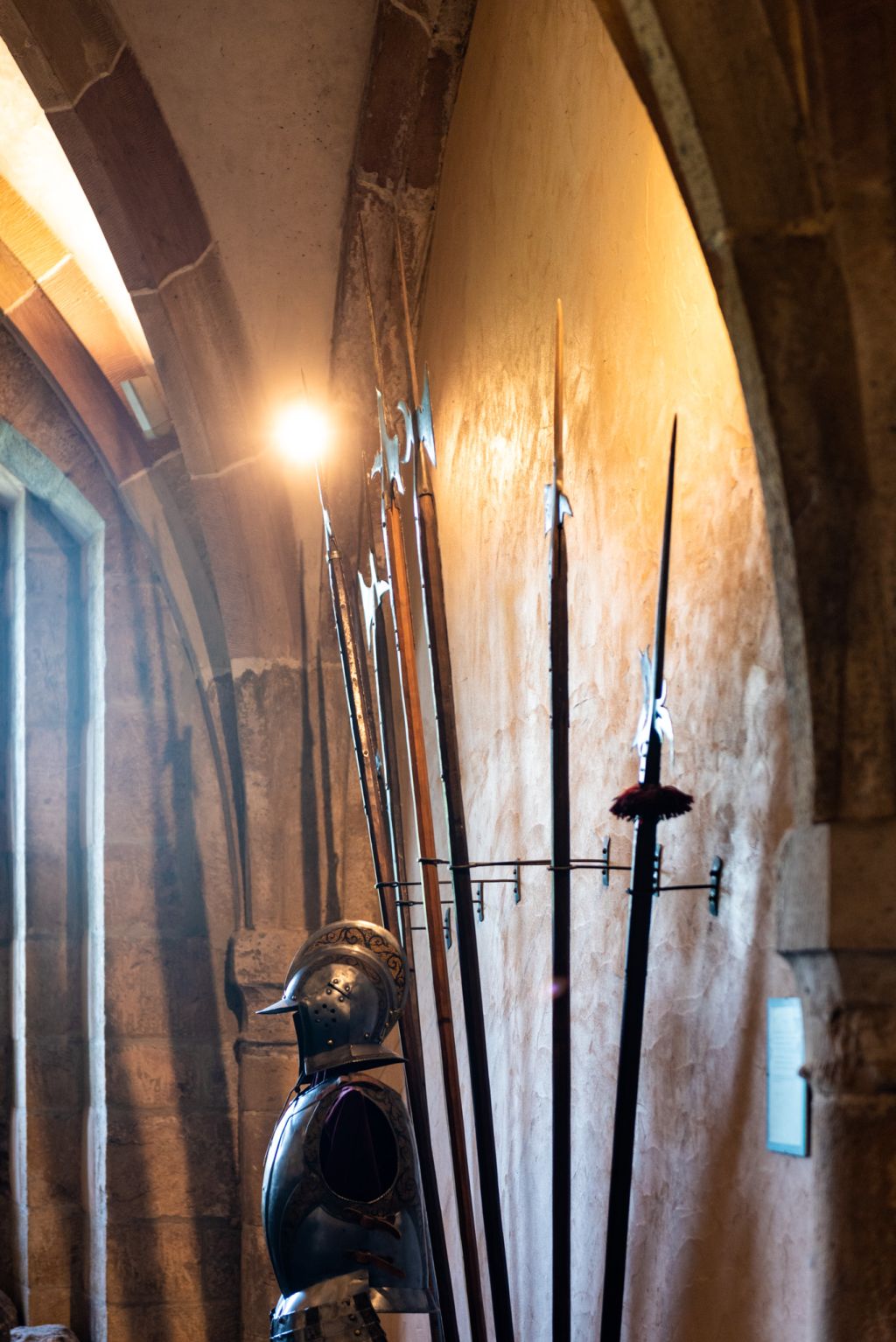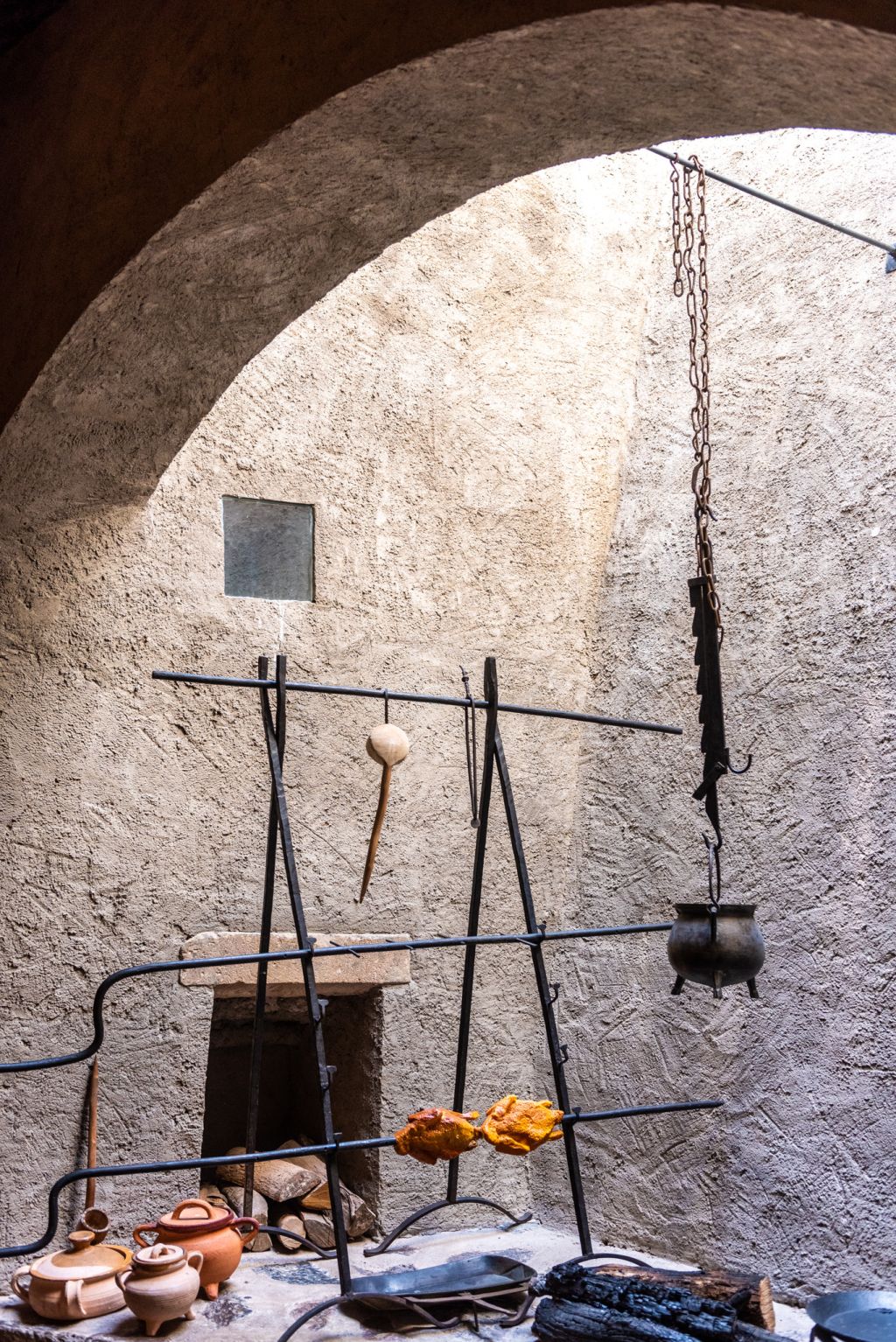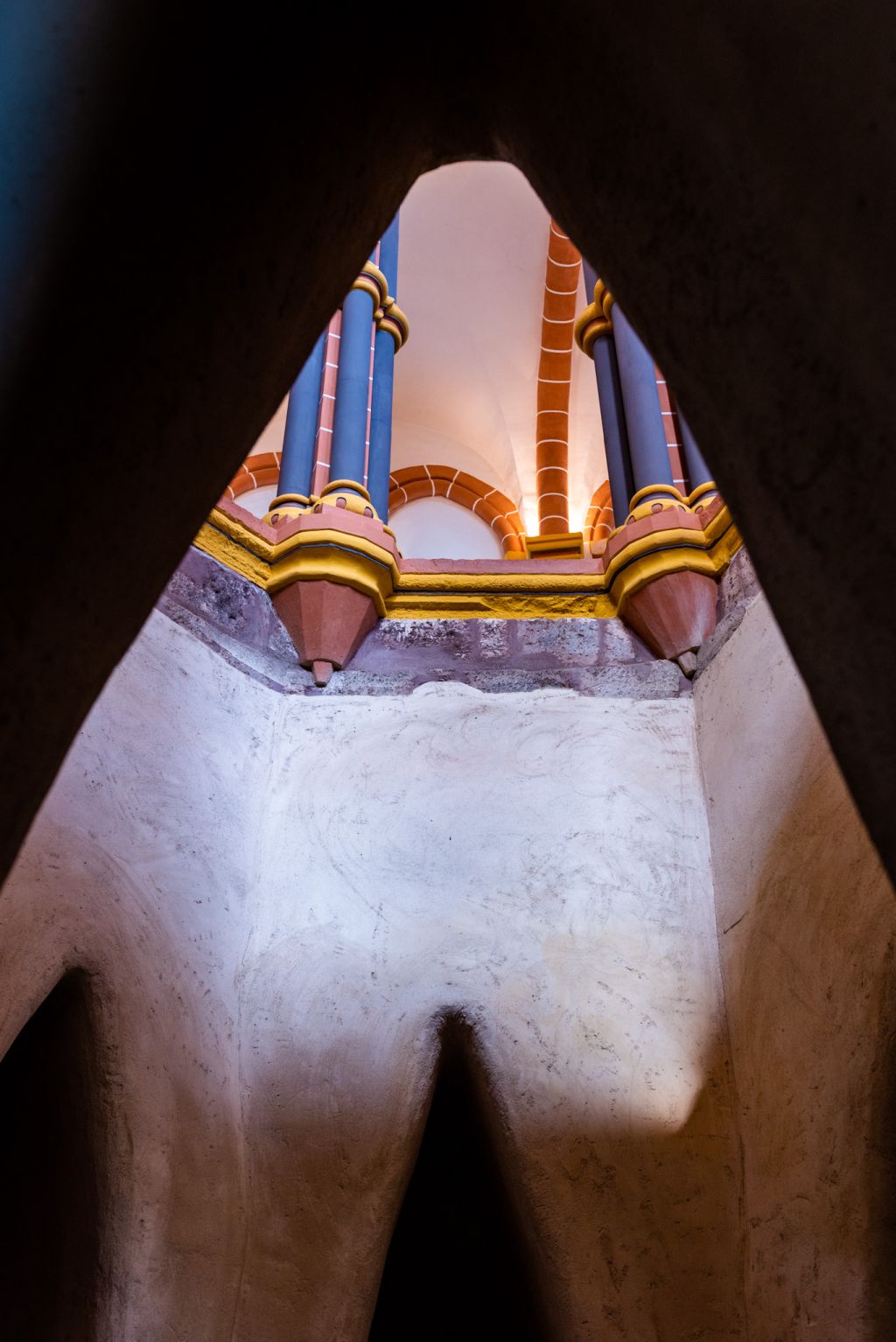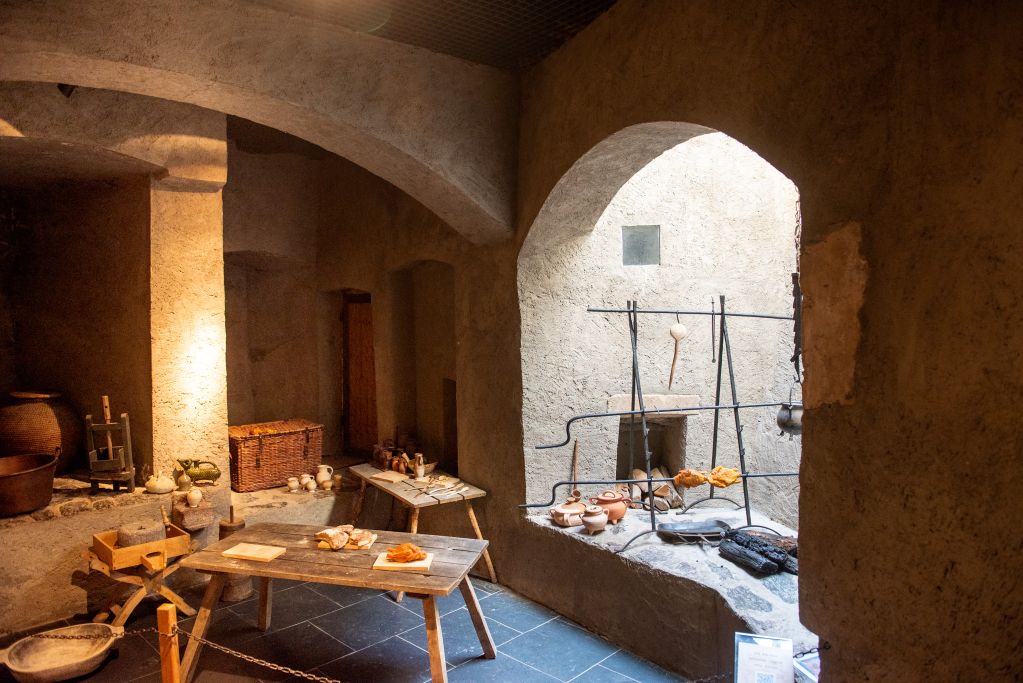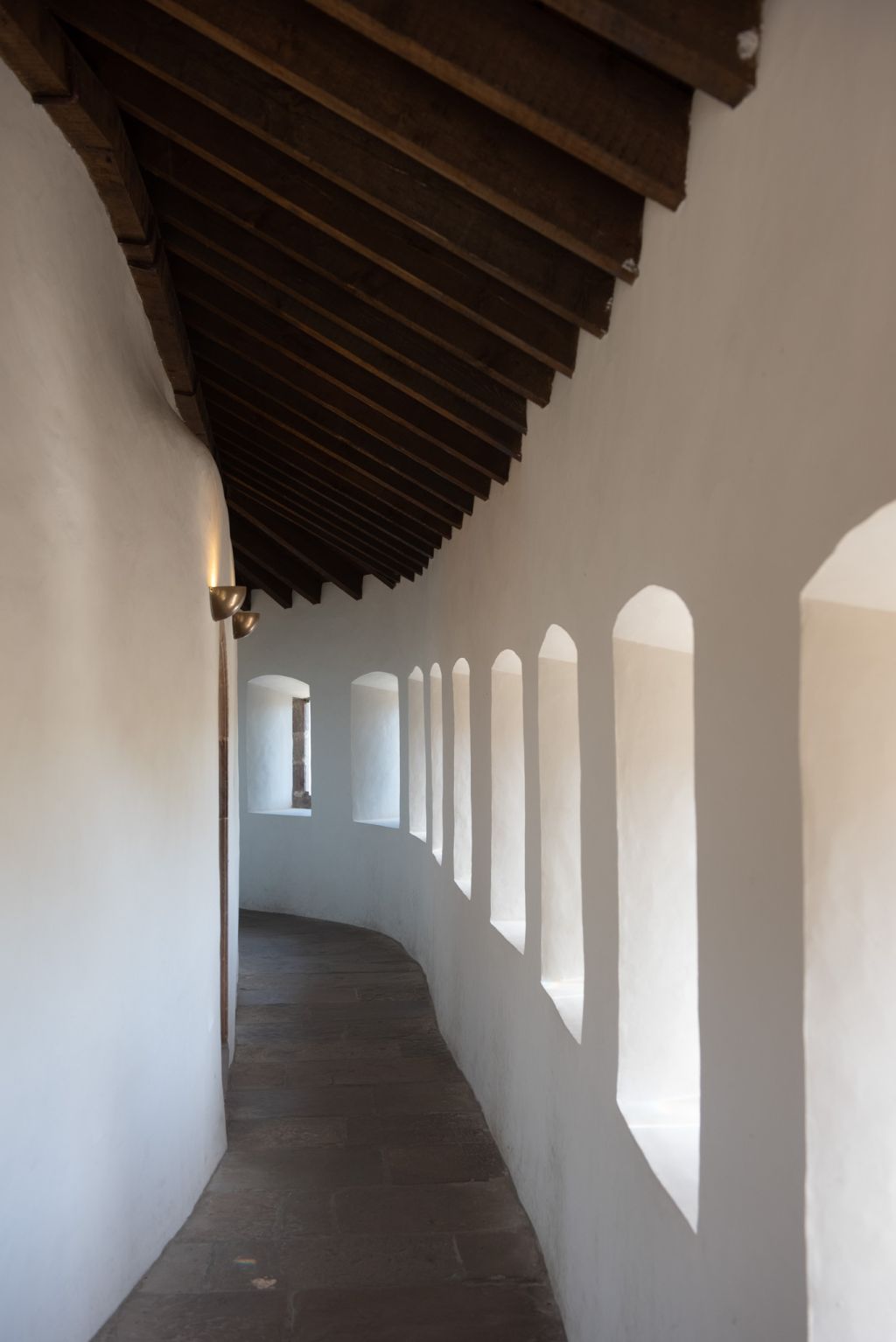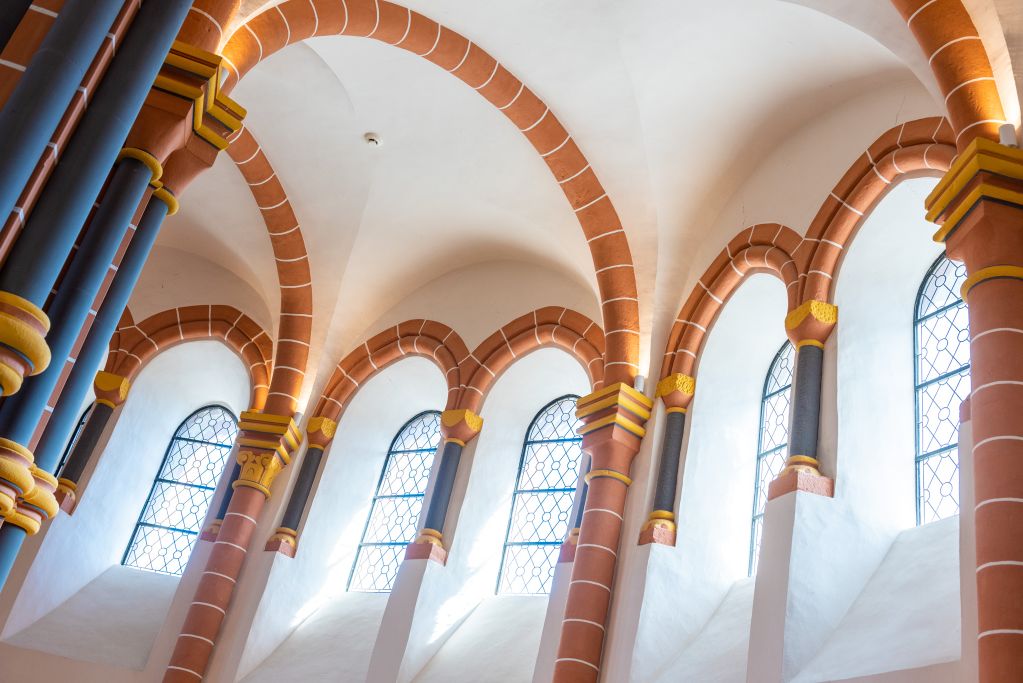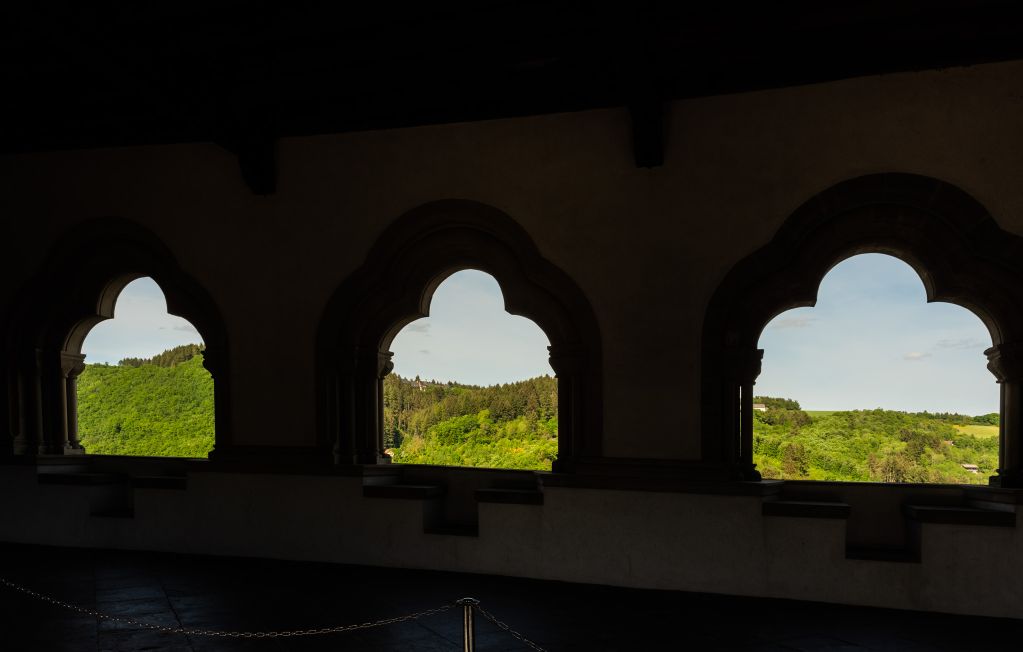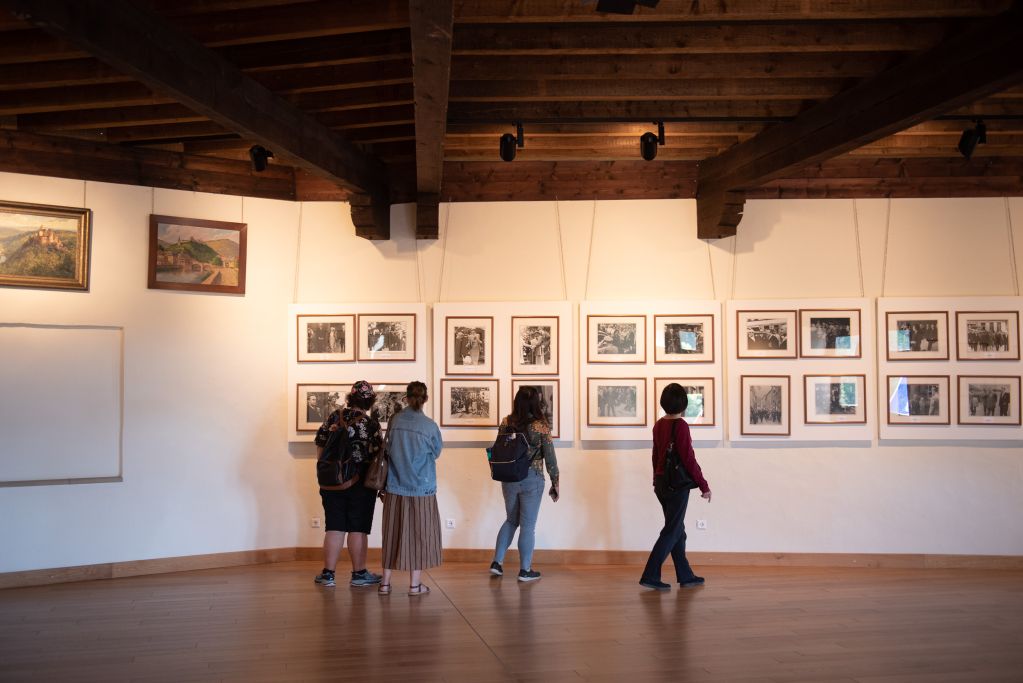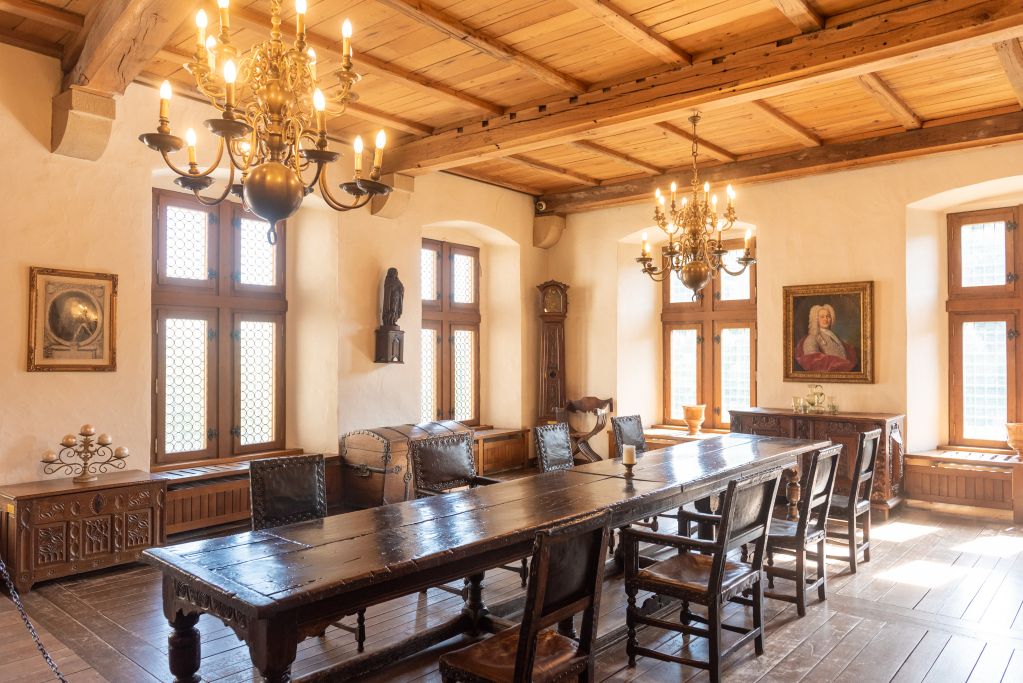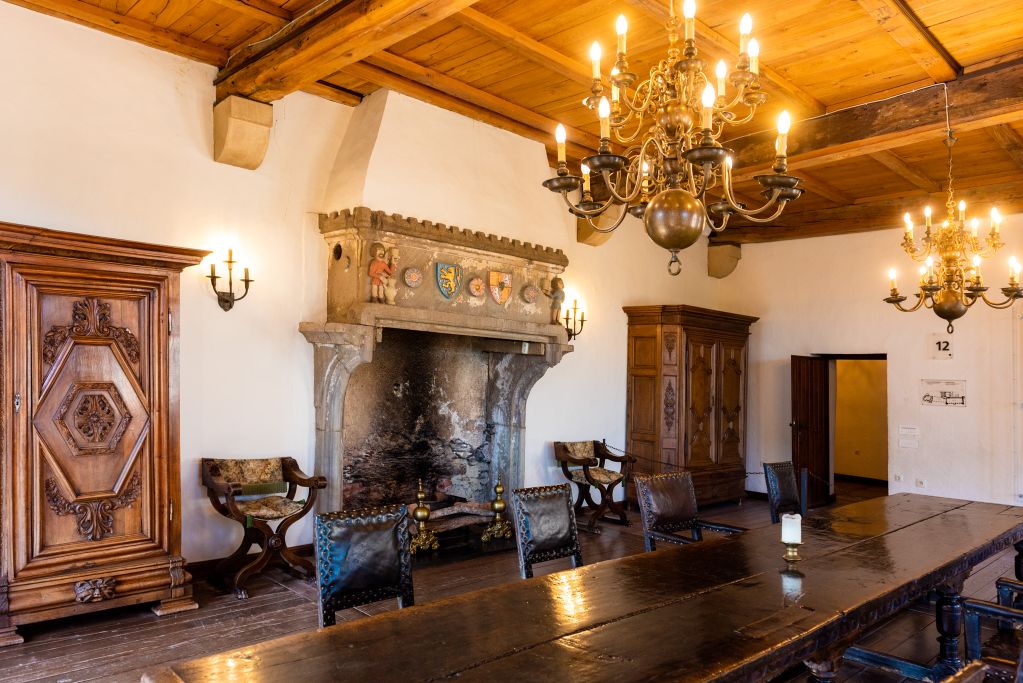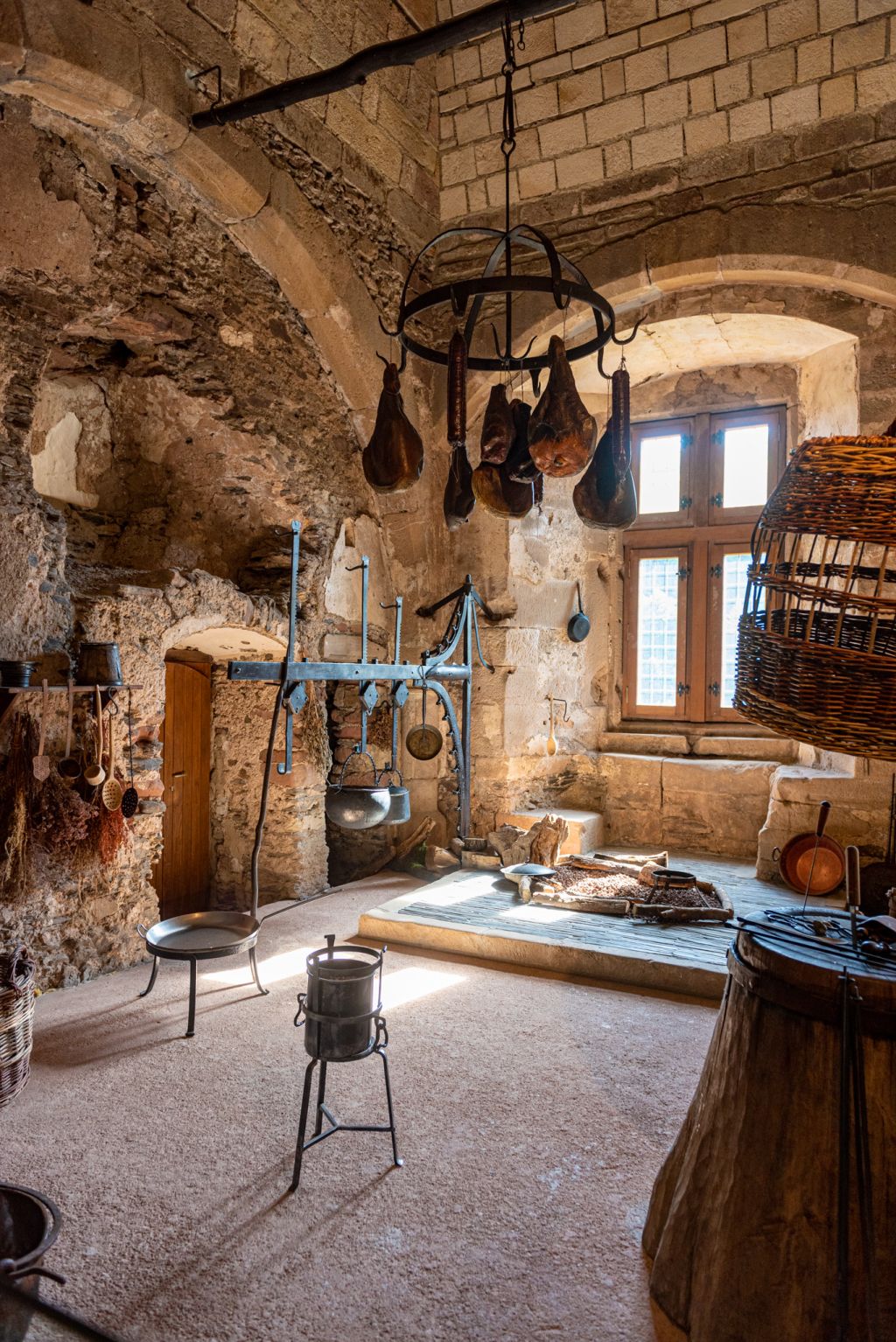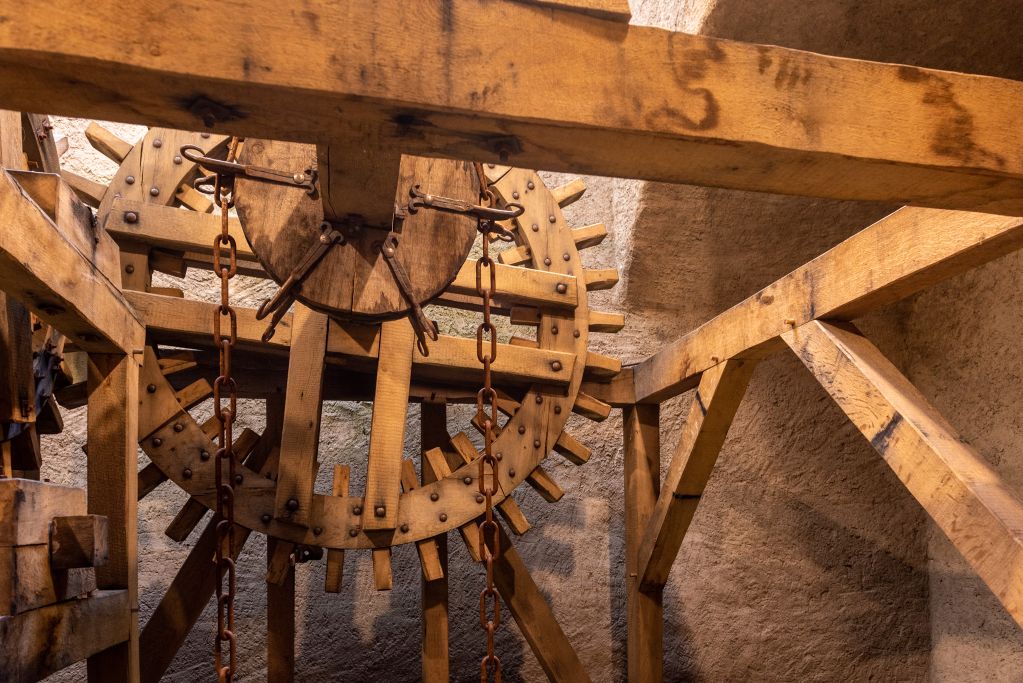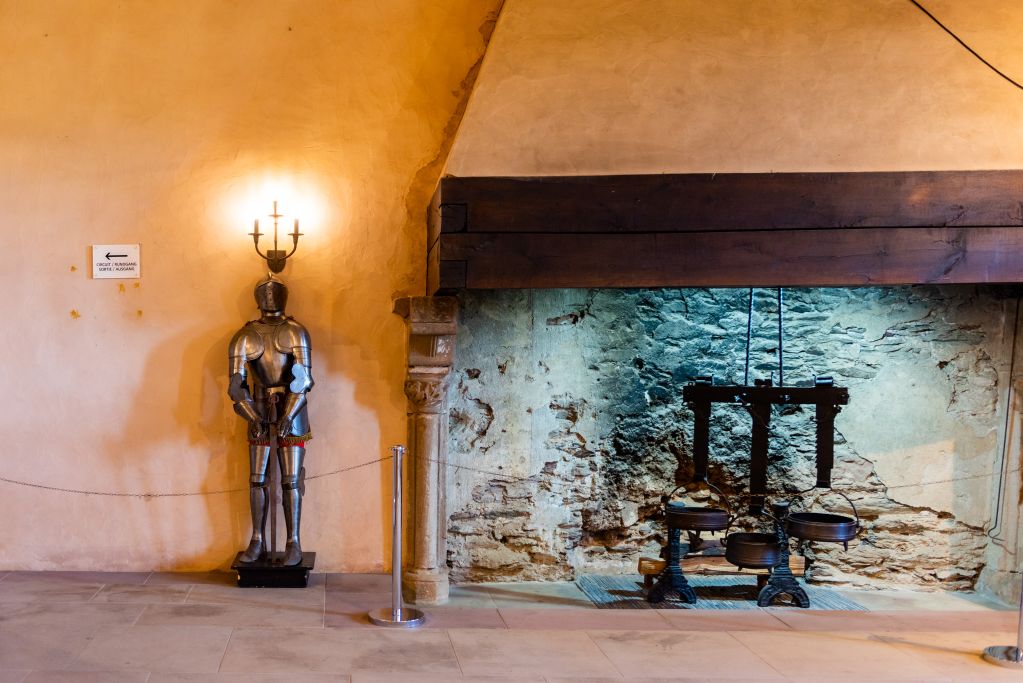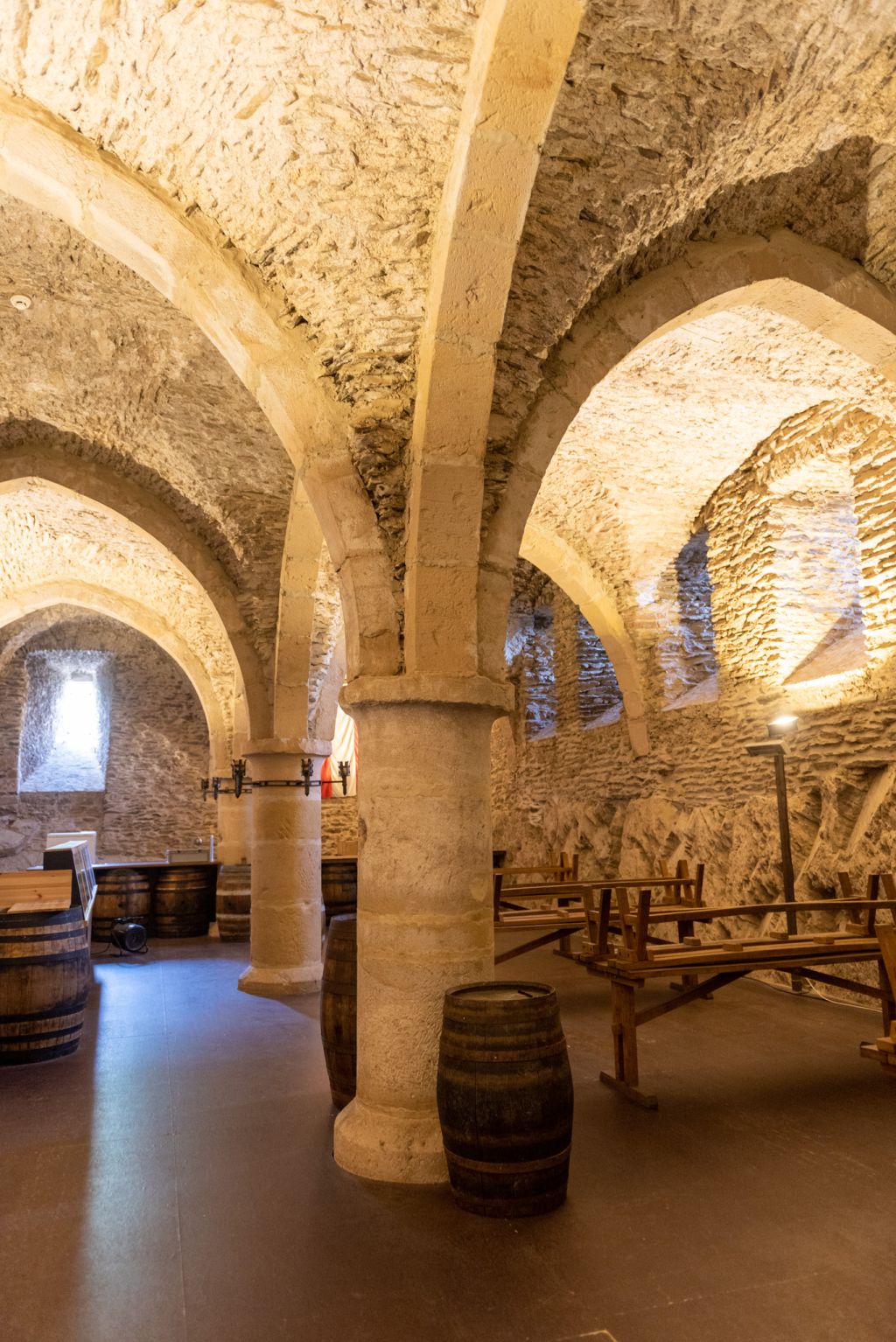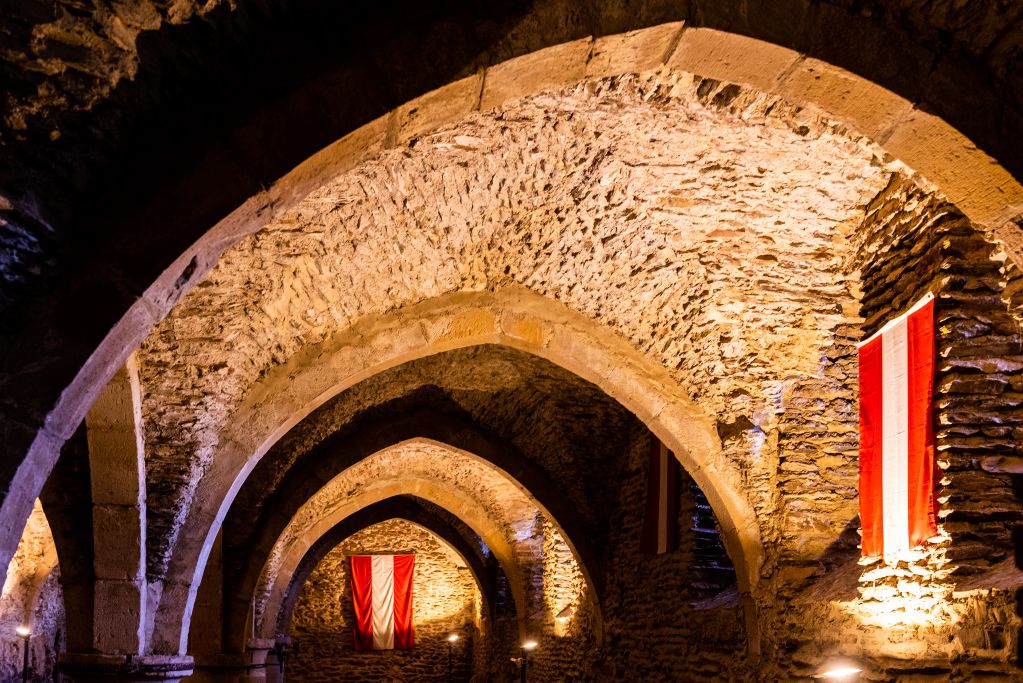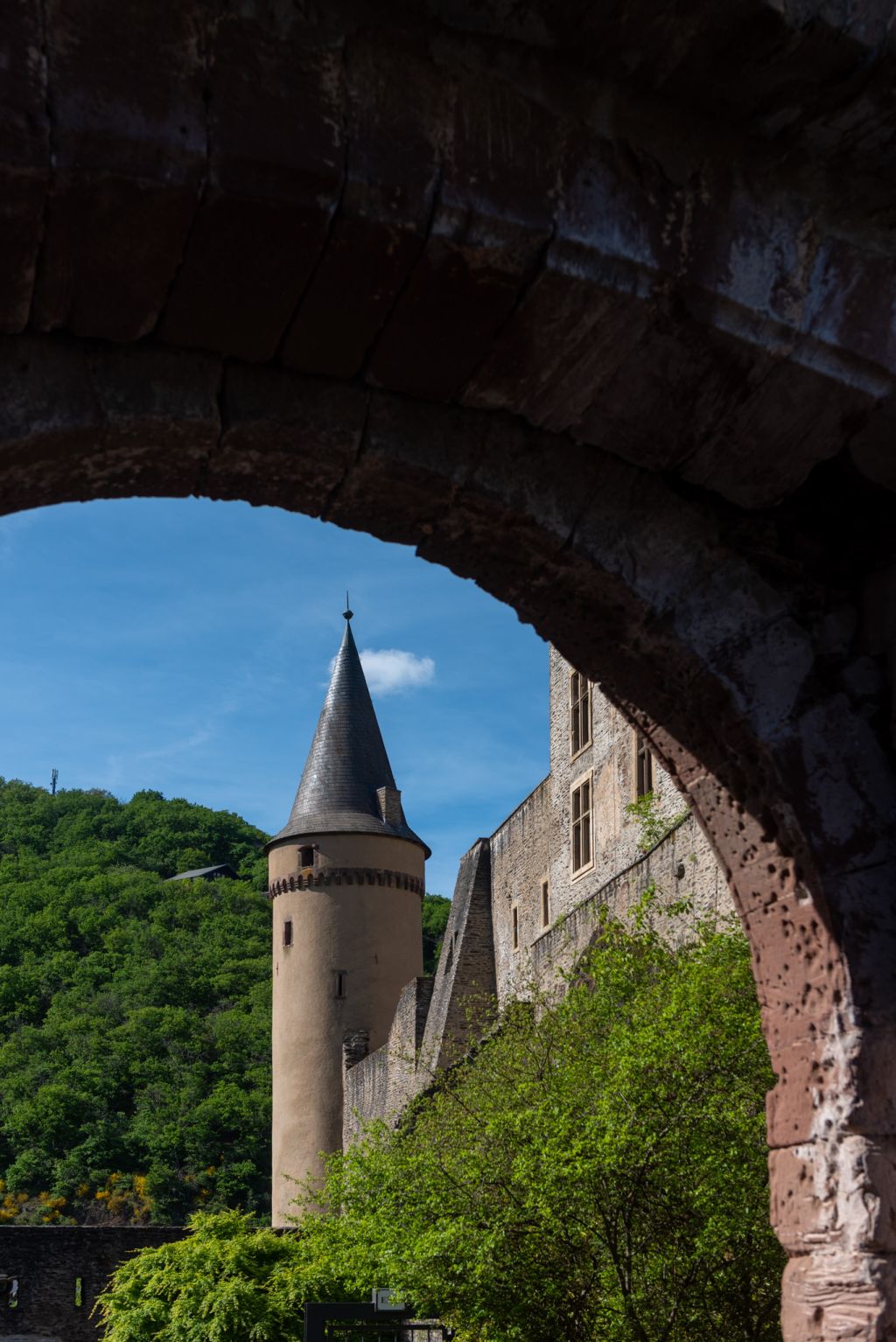Vianden Castle
Ahistorical monument that will continue to make us dream
TheChâteau de Vianden occupies a special place among the many heritagetreasures of the Grand Duchy. Synonymous with romanticism,architectural excellence and symbiosis with the natural environment,the castle has weathered the vicissitudes of the centuries andunderwent an exemplary restoration in the 1980s.
Thecastle of Vianden is one of the top tourist attractions in the GrandDuchy. Visits to this site were part of our childhood - how manytimes did we come here, with family or friends, aware of the almostceremonial nature of the excursion! Our whole imagination wasstimulated by the visit, which felt like a dive into an adventurefilm. Moreover, the greatest poets and painters were moved by thisbeautiful castle, set on its promontory, dominating the village andthe Our valley. One of the most illustrious admirers of the site wasVictor Hugo who, during his numerous stays in Luxembourg, drew itseveral times.
The castle of Vianden gives the idea of abuilding that has crossed the centuries, unshakeable, having seengenerations of occupants, knights, nobles, bourgeois... However, ifwe look at its history, we realise that it is the result of amultitude of interventions, demolitions, renovations,reconstructions, additions... The castle has never ceased to evolveand to adapt to different uses. That said, it is extremely evocativefor the average visitor to imagine the symbolism of a medieval castlekept intact over the centuries.
A guided tour
Inorder to rediscover this castle with a new eye, we asked for a guidedtour with a member of the non-profit organisation "Les Amis duChâteau de Vianden". Jessica Ersfeld welcomed us on a sunnyafternoon in May. Jessica has several functions within thisassociation which manages the historic site: she is head of personneland also responsible for the daily management and the culturalprogramme.
As a prelude to the visit in the castle itself,Jessica invites us to discover the cafeteria and the info-centre, twomodern structures that were inaugurated in 2017. We take theopportunity to have a short interview with her.
Wunnen: Weimagine that Vianden Castle is one of the most visited sites inLuxembourg ...
Jessica Ersfeld: Indeed, it comes second in the annual ranking,after the guided tours in the capital. But as a historical building,it is indeed first on the list. In 2019, we recorded a record numberof 220,000 visitors. The number of visitors has of course dropped in2020 and 2021 because of the pandemic. Since the beginning of 2022,and especially since the lifting of health restrictions, visitornumbers have picked up strongly. If the trend continues, we should beclose to the 2019 level.
Wunnen: What is the origin ofthe visitors ?
JE: 30% come from the Netherlands and 20% from Luxembourg andthe Greater Region. The other 50% come from the rest of the world. Itis a fact that many Luxembourg residents, even local people, havenever visited the castle. In 2020 and 2021, we were pleased to see anincrease in this more local, more Luxembourgish public, in the spiritof "Vakanz Doheem".
Wunnen: Who is responsiblefor the maintenance and management ?
JE: The castle is state property, so the most importantinterventions are carried out by the INPA - “Institut National pourle Patrimoine Architectural” (National Institute for ArchitecturalHeritage), formerly the “Service des Sites et Monuments Nationaux”.The non-profit organisation "Les Amis du Château de Vianden"is responsible for the day-to-day management, minor repairs, visitsand programming.
Created in ..., the association employs 17full-time staff. The site is open all year round, seven days a week,except on Christmas and New Year's Eve. Although there are slightlyfewer visitors in winter, the castle attracts visitors in allseasons. The experience is unique each time, with the surroundingnature changing colour at every time of year.
Wunnen: Such a remarkable castle certainly has an internationalaura...
JE: It is true that the castle is regularly selectedand highlighted in numerous reports and publications. In 2019, it wasincluded by CNN, the American news channel, in its list of the 21most beautiful castles in the world. The castle has also been thesetting for many films, including 'The Shadow of the Vampire',starring John Malkovitch, 'George and the Dragon', starring PatrickSwayze, 'The Musketeer', starring Justin Chambers, and the morerecent Netflix production 'Letter for the King'. We also get a lot ofrequests for music video shoots.
Wunnen: We assume thatthe programming this year is back to normal ?
JE: Absolutely ! The "Portae temporis" weekend takes placefrom June 4 to 5. The medieval festival will take place from July 30 to August 7. The book and paper festival is scheduled for the weekendof September 10 and 11. In addition, we regularly host exhibitions,concerts and other events.
A college of curators
As a national monument, Vianden Castle is under the protectionof a Board of Trustees which decides on the restoration, developmentand use of the property. The College is under the high presidency ofH.R.H. the Grand Duke and consists of representatives of the State ofthe Grand Duchy of Luxembourg, the Grand Ducal House and the City of Vianden.
A tour rich in art andarchitecture
After the interview, JessicaErsfeld takes us on the official tour, which includes about twentyrooms and areas. We admire the knights' armour in the weapons room.The archaeological crypt, which is connected to the armoury, containsmedieval layers of the site and models of the different phases of thecastle's construction.
After passing through the formerkitchens, we reach the lower chapel, which is connected to the upperpart by a central hexagonal opening.
In the horsemen's stove(or oven), weapons and a complete chain mail from the 14th centuryare on display.
Next is the large kitchen, with its manyutensils that invite us to imagine how food was prepared in medievaltimes.
The dining room, which connects the large kitchen to thecrypt, contains Romanesque elements and a 17th century fireplace.Directly opposite the dining room, we take a look at the 54-metredeep well.
The tour continues with the impressive knights'hall with its majestic vaults.
After a diversion to the terrace- a vast platform offering a splendid view of the city - we enter theupper chapel, whose polychrome has been restored after extensivestudies.
We take the walkway that surrounds the chapel, whosewhite walls are bathed in a diaphanous light.
We enter one ofthe most extraordinary rooms in the castle, the Byzantine gallery,which has ten glassless openings and offers remarkable views of thesurrounding countryside.
The tour then takes us to thebanqueting hall, the bedroom with its four-poster bed, and themajestic Vic Abens festival hall with its magnificent historicaltapestries, where classical concerts are regularly held.
On thetop floor is the Jean-Pierre Koltz room, a large space for temporaryexhibitions and a permanent photo collection.
In addition tothis official tour, Jessica Ersfeld reveals some more secret places:the huge attic with its monumental framework, a vast space used as astorage area; the small garden located on the southern slope of thecastle's enclosure, which will soon be redeveloped; the large cellarcut into the rock in the base of the castle, which is transformedinto a medieval tavern for various events.
The InformationCentre
Designed by “Holweck BingenArchitectes” and inaugurated in 2017, the Information Centre housesa permanent exhibition on the history of the site, its developmentand the construction and deconstruction phases of the castle. Alongten stations, suspended above archaeological remains and followingthe old walkway, visitors can discover the different historicalperiods through graphic means and lighting effects. A largeaudiovisual projection brings this new educational area to aspectacular close.
Thestructure of the information centre is completed by a large cafeteriaand a shop.
Over the centuries
Thecastle was built between the 11th and 14th centuries on thefoundations of a Roman castle and a Carolingian refuge. Its mostbeautiful rooms, the chapel, the small palace and the large palace,were built in the first half of the 13th century.
Until thebeginning of the 15th century, the castle was inhabited by thepowerful counts of Vianden.
In 1417, the county and the castlewere inherited by the younger branch of the German House of Nassau,which in 1530 also took over the French principality of Orange.
In1820, the castle and its outbuildings were sold by William I ofOrange-Nassau - King of the Netherlands, Grand Duke of Luxembourg andCount of Vianden - to a local citizen who dismantled the high Gothicroofs and the interior fittings.
In 1827, the castle, which hadbecome a ruin, was bought by King William II. This marked thebeginning of a long period of alternating damage and restoration.
In1890, the castle passed to Grand Duke Adolph of the elder branch ofNassau. It remained in the possession of the grand-ducal family until1977.
In 1977, the castle was purchased by the Luxembourg state,which undertook its restoration in accordance with historical forms.Restoration and reconstruction work was then undertaken under thedirection of the “Service des sites et monuments nationaux”(INPA).
The castle is open every day from 10 AM to 6 PM.
